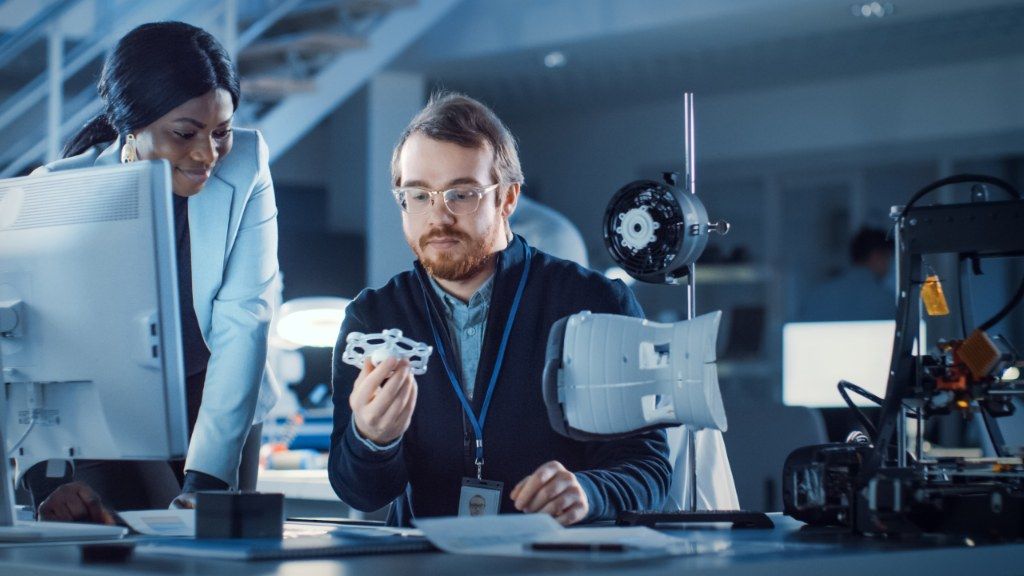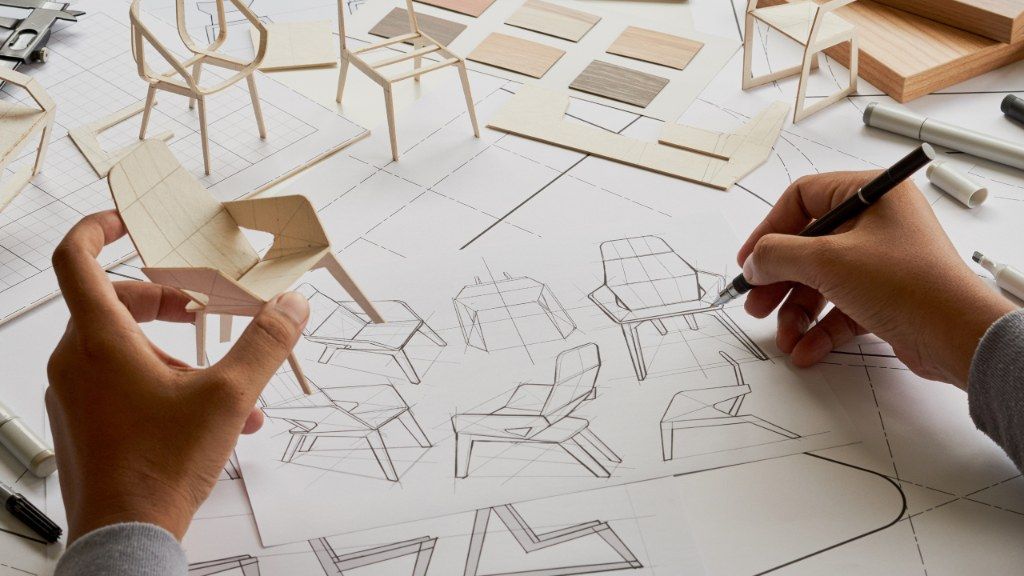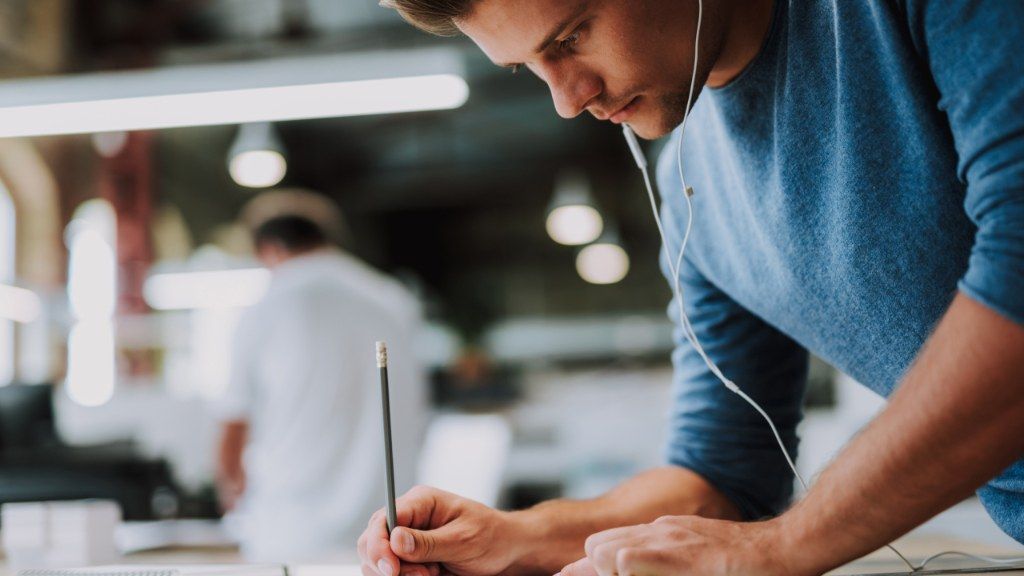Product Designer Salary - Product Design And Development
By Marco Franzoni • August 13, 2024

Introduction to Product Designer Salaries
Overview of Product Designer Roles
In the ever-evolving world of product design and development, product designers play a pivotal role in bringing innovative ideas to life. These creative professionals are responsible for envisioning and crafting products that meet customer needs and align with brand messaging. From the initial concept to the final product, product designers are involved in every step of the product design process. They collaborate with engineers, UX designers, and marketing teams to ensure that the product not only functions well but also resonates with the target audience.
Importance of Understanding Salary Trends
Understanding the salary trends for product designers is crucial for both job seekers and companies. For job seekers, knowing the typical salary range for product designer jobs helps in negotiating fair compensation and identifying competitive positions within the industry. For companies, staying informed about salary trends is essential for attracting and retaining top talent. Competitive salaries can give businesses a significant advantage in a market where the demand for skilled product designers is high.
With a solid grasp of the development process and technical knowledge, product designers can command higher salaries, especially when they demonstrate a strong ability to create innovative products that stand out in the market. As industries continue to innovate and customer expectations evolve, the role of a product designer becomes increasingly critical, making the understanding of salary trends all the more important.
The Role of a Product Designer
Key Responsibilities and Tasks
Product designers are at the heart of the product development process, taking great ideas and transforming them into tangible products. Their key responsibilities include conducting user research to understand customer needs, creating detailed product design specifications, and working closely with engineers and UX designers to develop prototypes. They play a critical role in ensuring that the final product meets both functional and aesthetic requirements, aligning with the company's brand messaging and target audience expectations. Throughout the development process, they must also consider manufacturing processes and technical constraints to create products that are feasible to produce.
Skills Required for Success
Success as a product designer requires a diverse skill set. Technical knowledge in areas like engineering and manufacturing processes is essential, as is creativity and an eye for detail. Product designers must be adept at problem-solving and possess strong communication skills to collaborate effectively with cross-functional teams. Additionally, understanding market trends and consumer behavior is crucial for creating products that not only meet customer needs but also provide a competitive advantage in the market. Being proficient in various design tools and software, staying updated with industry trends, and continuously seeking feedback for improvement are all part of the skill set that makes a product designer successful.
What is a Product Design Engineer?
Definition and Key Differences from Product Designers
A product design engineer focuses on the technical and engineering aspects of product development. Unlike product designers, who emphasize aesthetics and user experience, product design engineers concentrate on the functionality, manufacturability, and structural integrity of the products. They possess extensive technical knowledge and are skilled in manufacturing processes, ensuring that the products can be efficiently produced at scale. Their role is crucial in bridging the gap between design concepts and the final production-ready products.
Typical Tasks and Responsibilities
Product design engineers are responsible for creating detailed specifications and engineering drawings, conducting simulations and tests to validate designs, and collaborating with other engineers and designers throughout the development process. They are deeply involved in prototyping, testing, and refining products to meet both customer needs and business goals. By focusing on the technical aspects of the product design process, they help companies maintain a competitive advantage in the market.
Product Designer Jobs
Types of Product Designer Positions Available
Product designer jobs span a wide range of roles and specializations. Positions include UX designers who focus on user experience, industrial designers who work on the physical aspects of products, and visual designers who ensure the aesthetics align with brand messaging. Additionally, there are roles like interaction designers and information architects who specialize in specific areas of the product design process. Each role requires a unique set of skills and technical knowledge, but all aim to create products that meet customer needs and provide a competitive advantage in the market.
How to Find Product Designer Jobs
Finding product designer jobs involves leveraging multiple strategies. Job seekers should start by building a strong portfolio that showcases their creativity and ability to develop innovative products. Networking within industry-specific events and online communities can provide valuable connections and job leads. Additionally, utilizing job search platforms, company websites, and recruitment agencies specializing in design and development positions can increase the chances of landing a desired job. Staying updated on industry trends and continuously enhancing technical knowledge and skills are also critical for securing a role in this competitive field.

Building a Strong Product Designer Portfolio
Essential Elements to Include
A strong product designer portfolio is critical for securing product designer jobs and demonstrating your ability to create products that meet customer needs. Essential elements include a variety of project examples that showcase your creativity and technical knowledge. Each project should outline the development process, from initial concept to final product, highlighting your role in user research, prototyping, and testing. Including detailed case studies that explain your design decisions and the impact of your work on the target audience and customer base is also vital. Visual elements such as high-quality images, videos, and interactive prototypes can significantly enhance your portfolio's effectiveness.
Tips for Showcasing Your Best Work
When showcasing your best work, focus on projects that demonstrate your unique strengths and versatility as a designer. Tailor your portfolio to align with the requirements of the job you are seeking, emphasizing relevant skills and experiences. Keep your portfolio well-organized and easy to navigate, ensuring that each project is clearly presented. Additionally, seek feedback from peers and mentors to refine your portfolio continually. Highlighting your ability to work with cross-functional teams, such as engineers and UX designers, can also provide a competitive advantage.
The Importance of User Research in Product Design and Development
Role of User Research in the Design Process
User research is a fundamental aspect of the product design process, ensuring that the products developed meet the needs and preferences of the target audience. By understanding customer needs and behaviors, product designers can create products that offer a better user experience and greater functionality. User research helps identify pain points, preferences, and expectations, allowing designers to make informed decisions throughout the development process. This research is essential for developing a competitive advantage, as it ensures that the final product resonates with the customer base and stands out in the market.
Methods and Tools for Effective User Research
Effective user research employs various methods and tools to gather valuable insights. Techniques such as surveys, interviews, focus groups, and usability testing are commonly used to collect qualitative and quantitative data. Tools like heatmaps, analytics software, and A/B testing platforms provide deeper insights into user interactions and behaviors. Collaborating with UX designers, engineers, and other stakeholders can enhance the research process, ensuring that the findings are comprehensive and actionable. By integrating user feedback and insights into the product design process, companies can create products that not only meet customer needs but also drive innovation and market success.
7 Stages of Product Development
Stage 1: Ideation
The ideation stage is where the journey of product development begins. It involves brainstorming and generating new product ideas that address customer needs and market gaps. Creativity and innovation are crucial here, as this stage lays the foundation for the entire development process. Successful ideation results in a great idea that has the potential to be transformed into a tangible product.
Stage 2: Research
Research is essential to validate the initial ideas and understand the target audience. This stage involves conducting user research, analyzing market trends, and gathering feedback from potential customers. The goal is to ensure that the product concept aligns with customer needs and has a competitive advantage in the market. This stage also helps in identifying technical and business feasibility.
Stage 3: Design
In the design stage, the product concept begins to take shape. Product designers and UX designers collaborate to create detailed design specifications and prototypes. This stage focuses on both the aesthetics and functionality of the product, ensuring that it meets customer needs and brand messaging. The design process includes iterative feedback and revisions to refine the product.
Stage 4: Prototyping
Prototyping involves creating a working model of the product. This stage allows designers and engineers to test the functionality, usability, and manufacturability of the product. Prototyping helps identify potential issues and areas for improvement before moving on to full-scale production.
Stage 5: Testing
During the testing stage, the prototype undergoes rigorous testing to ensure it meets all requirements and performs as expected. This includes usability testing, stress testing, and quality assurance checks. Feedback from testing is used to make necessary adjustments and enhancements to the product.
Stage 6: Development
The development stage is where the product moves from prototype to production. Engineers and manufacturers collaborate to establish the production processes and ensure that the product can be produced efficiently and at scale. This stage involves finalizing specifications and preparing for mass production.
Stage 7: Launch
The final stage of product development is the launch. This involves marketing and distributing the product to the target audience. A successful launch requires a well-coordinated strategy that includes advertising, sales, and distribution channels. The goal is to introduce the final product to the market and generate initial sales and customer feedback.

10 Stages of Product Design
Stage 1: Discovery
The discovery stage involves understanding the problem that the new product aims to solve. It includes extensive market research, user research, and gathering insights from the target audience to ensure that the product design aligns with customer needs and industry trends. This stage sets the foundation for the entire product design process.
Stage 2: Concept Development
In the concept development stage, initial ideas and solutions are brainstormed. Designers work on creating product concepts that address the identified problem. This stage is crucial for generating innovative ideas and exploring various design possibilities. It often involves sketching, creating mood boards, and developing rough prototypes.
Stage 3: Design Specification
Design specification is about defining the technical requirements and detailed specifications of the product. This includes materials, dimensions, manufacturing processes, and any other technical knowledge necessary to produce the final product. Clear specifications help ensure that all stakeholders have a shared understanding of the product vision.
Stage 4: Preliminary Design
Preliminary design involves creating initial design drafts and low-fidelity prototypes. These early designs are used to test the feasibility of the concept and gather feedback from stakeholders and potential users. This stage is iterative, with multiple rounds of design and feedback to refine the product.
Stage 5: Detailed Design
In the detailed design stage, the product design is further refined and finalized. High-fidelity prototypes are created, and every aspect of the design is meticulously detailed. This stage ensures that the product meets all functional and aesthetic requirements and is ready for the next phase of development.
Stage 6: Prototype Development
Prototype development involves creating a working model of the product. This prototype is used to test the design's functionality, usability, and manufacturability. It allows designers and engineers to identify any issues and make necessary adjustments before moving to full-scale production.
Stage 7: Design Validation
Design validation is the process of testing the prototype to ensure it meets all design specifications and customer needs. This stage includes rigorous testing and user feedback to confirm that the product performs as intended. Validation helps in identifying any final adjustments needed before production.
Stage 8: Design Refinement
Based on the feedback and testing results, the design is refined to address any identified issues. This stage ensures that the product is optimized for performance, user experience, and manufacturability. Design refinement is crucial for delivering a high-quality final product.
Stage 9: Final Product Design
The final product design stage involves preparing all the necessary documentation and specifications for production. This includes detailed design files, assembly instructions, and quality control standards. The final design is reviewed and approved by all stakeholders.
Stage 10: Production Handover
In the production handover stage, the finalized design is transferred to the manufacturing team. This stage includes setting up production processes, training manufacturing staff, and ensuring that all production parameters are in place. The goal is to ensure a smooth transition from design to mass production.
3 Top Examples of Product Design in Action
Example 1: Successful Product Case Study
One of the most notable examples of successful product design is the development of the iPhone by Apple. The iPhone's design process focused on user research and understanding customer needs, leading to a product that revolutionized the smartphone industry. Apple's designers and engineers collaborated closely to create a device that combined cutting-edge technology with a user-friendly interface. The iPhone's sleek design, intuitive functionality, and seamless integration with other Apple products made it a benchmark for product design success. This case study highlights the importance of technical knowledge, user feedback, and innovative thinking in creating a competitive advantage.
Example 2: Innovative Design Approach
Dyson's vacuum cleaners are a prime example of innovation in product design. By rethinking the traditional vacuum cleaner, Dyson's team developed a bagless vacuum with powerful cyclone technology. This innovative approach addressed common pain points of conventional vacuum cleaners, such as loss of suction and frequent bag changes. Dyson's focus on engineering excellence and user-centered design resulted in a product that not only performed better but also transformed the market. The success of Dyson vacuum cleaners underscores the value of creativity and technical expertise in the product development process.
Example 3: User-Centered Design Success
IDEO's design of the first Apple mouse is a classic example of user-centered design. By prioritizing user research and testing, IDEO created a mouse that was not only functional but also comfortable and easy to use. The design process involved multiple iterations and feedback from users to refine the shape, size, and functionality of the mouse. This project demonstrated how a deep understanding of user needs and behaviors can lead to a highly successful product. The Apple mouse became an iconic example of how thoughtful design can enhance user experience and drive product success.

Product Design vs. Product Development: Key Takeaways
Differences Between Design and Development
Product design and product development are distinct yet interconnected processes in creating a new product. Product design focuses on the aesthetics, functionality, and user experience. Designers prioritize creativity and customer needs, using technical knowledge to create products that are visually appealing and user-friendly. On the other hand, product development encompasses the broader development process, including engineering, prototyping, testing, and manufacturing processes. It involves turning the designer's vision into a viable, market-ready product through detailed planning and execution.
How Both Processes Complement Each Other
Both product design and product development are critical for creating successful products. While designers bring creativity and user-centered perspectives, the development process ensures that these designs are feasible and manufacturable. Collaboration between designers and engineers is essential to align the product design process with production capabilities and market requirements. This synergy results in a final product that meets customer needs, maintains a competitive advantage, and is ready for market launch.
Gain Industry-Related Work Experience
Importance of Practical Experience
Practical experience is essential for aspiring product designers to understand the complexities of the development process and gain technical knowledge. It helps in building a competitive advantage by allowing designers to apply theoretical concepts to real-world scenarios, thereby meeting customer needs more effectively.
Ways to Gain Relevant Experience
Gaining relevant experience can be achieved through internships, co-op programs, freelance projects, and participating in design competitions. Collaborating with companies, seeking mentorship from industry professionals, and working on diverse projects help in honing skills and expanding one's portfolio, ultimately leading to better job prospects in the product design industry.
Product Design Engineer Work Environments
Typical Workplaces for Product Design Engineers
Product design engineers typically work in various settings, including manufacturing companies, engineering firms, and technology companies. They may also find opportunities in consumer goods industries, automotive design, and product development consultancy firms. These workplaces provide the resources and collaborative environments necessary for engineers to create products that meet customer needs and market demands.
Working Conditions and Expectations
Working conditions for product design engineers often involve a mix of office work, where they focus on design and technical specifications, and hands-on work in manufacturing environments or labs, where they develop and test prototypes. Engineers are expected to have a strong technical knowledge base, problem-solving skills, and the ability to work collaboratively with designers and other stakeholders throughout the product development process. Their role is crucial in ensuring that the final product is both functional and manufacturable.

Conclusion
Recap of Key Points
In this article, we explored the various facets of product design, including the roles and responsibilities of product designers and design engineers, the importance of building a strong portfolio, and the value of user research in the design process. We also highlighted the stages of product development and provided examples of successful product designs.
Final Thoughts on Pursuing a Career in Product Design
Pursuing a career in product design offers exciting opportunities to innovate and create products that meet customer needs and stand out in the market. With a blend of creativity, technical knowledge, and practical experience, aspiring product designers can achieve success in this dynamic industry. Staying informed about salary trends and continuously honing your skills will ensure a bright future in product design.